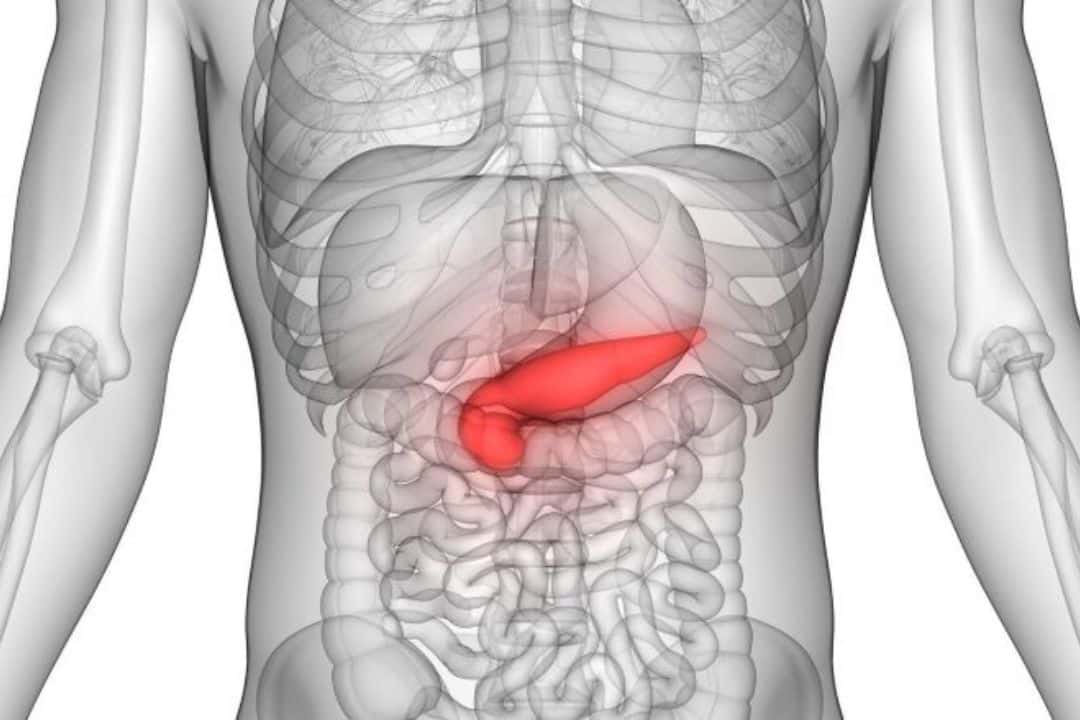Pancreatitis
Pancreatitis occurs when digestive enzymes become activated while still in the pancreas, irritating the cells of your pancreas and causing inflammation. With repeated bouts of acute pancreatitis, damage to the pancreas can occur and lead to chronic pancreatitis.
Pancreatitis is a condition characterized by the inflammation of the pancreas, an organ that plays a vital role in digestion and blood sugar regulation. The pancreas produces enzymes that aid in digestion and hormones like insulin to regulate blood sugar. When these enzymes become prematurely activated within the pancreas, they begin to attack and inflame the pancreas itself. Pancreatitis can be acute, occurring suddenly and severely, or chronic, developing over time with repeated episodes of inflammation. If untreated, it can lead to severe complications, including permanent damage to the pancreas, diabetes, and digestive problems.

Symptoms of Pancreatitis
The symptoms of pancreatitis vary depending on whether the condition is acute or chronic. Common signs to watch for include:
Acute Pancreatitis Symptoms
Severe Upper Abdominal Pain
The pain often radiates to the back and can be debilitating. It may worsen after eating.
Nausea and Vomiting
Digestive enzymes irritate the pancreas and surrounding tissues, causing persistent nausea and vomiting.
Fever
A high temperature may occur as the body responds to the inflammation.
Rapid Pulse
An increased heart rate can accompany the pain and fever.
Tender Abdomen
The abdomen may be sensitive to touch, and swelling could be present.
Chronic Pancreatitis Symptoms
Chronic Abdominal Pain
The pain may be constant or occur intermittently, especially after meals.
Unintended Weight Loss
Due to the pancreas' reduced ability to aid in digestion, patients may lose weight without trying.
Oily, Foul-Smelling Stools (Steatorrhea)
Poor fat digestion can lead to greasy, smelly stools that float.
Diabetes
Over time, chronic inflammation can damage the insulin-producing cells, leading to diabetes.
Jaundice
Yellowing of the skin and eyes may occur if the bile duct is blocked by an inflamed pancreas
Treatment: Pancreatitis
Treatment varies based on the severity of the condition but generally includes the following:
Acute Pancreatitis Treatment
Hospitalization and Supportive Care
Fasting: The patient may need to stop eating for a few days to allow the pancreas to recover.
Intravenous (IV) Fluids: To keep the body hydrated while the pancreas rests, fluids are provided through an IV.
Pain Management: Medications are administered to control the pain.
Nutritional Support: In severe cases, a feeding tube may be used to provide nutrition while the digestive system heals.
Enzyme Replacement Therapy: In cases where digestion is severely impaired, enzyme supplements may be prescribed to help digest food.
Treating the Underlying Cause
If gallstones are causing the pancreatitis, they may be removed surgically.
If alcohol use is the cause, cessation of alcohol is critical.
For infections or other underlying causes, antibiotics or other treatments are given as necessary.
Chronic Pancreatitis Treatment
Lifestyle Modifications
Patients are advised to stop alcohol consumption and smoking, both of which exacerbate chronic pancreatitis.
A low-fat, healthy diet is recommended to reduce strain on the pancreas.
Pain Management
Long-term pain management may be required using medications or alternative therapies.
Pancreatic Enzyme Supplements
Patients with chronic pancreatitis often need enzyme supplements to aid in digestion and improve nutrient absorption.
Surgical Interventions
In some cases, surgery is necessary to remove blockages or damaged tissue in the pancreas. This could include removing part of the pancreas or draining cysts.
Management of Diabetes
If pancreatitis has caused diabetes, patients will need to manage their blood sugar levels through insulin therapy or other treatments.
Endoscopic Procedures
In some cases, an endoscopic retrograde cholangiopancreatography (ERCP) procedure may be required to remove blockages in the pancreatic ducts or bile ducts.
Long-Term Care and Monitoring
Regular follow-up appointments are necessary to monitor the pancreas’ condition and adjust treatment as needed.
Nutritional counseling, physical therapy, and emotional support may also be part of long-term management.







